
(Updated December 2014) In an era obsessed with getting smaller, we skinny folk, hardgainers, ectomorphs, string beans, babeshows, or whatever you want to call us naturally thin people—we’re outliers. When it comes to fitness, at best we’ll find ourselves slotted into a footnote: “Oh yeah, and if you’re naturally skinny—must be nice—you’ve got a fast metabolism and stuff so, ya know, just eat more.”
That “just eat more” advice would work fine for most people, but the fact that we aren’t most people is precisely why we’re being given that advice in the first place, and also why that advice is rather naive. For most people, eating lots of food and gaining weight is second nature. If you tell the average woman to “just eat more,” she’d be able to. Hell, she’d probably even like it (until she got fat).
What most people don’t realize is that telling us to eat more is as silly as us telling them, “Just eat less—duh.” That’s not going to solve any problems. In fact, if you go around telling people that, you’re probably going to get in a fight. (And if you’re going to go around getting in fights, it might help to build some muscle first. Luckily, that’s what this article is about.)
Anyway, I’m sure you’ve realized there’s a lot more at play here than how much you eat. And you’re right.
So what’s going on here, and what can you do about it?
You want to gain weight?!
While most people struggle with fat, we struggle with muscle and strength. When we’re looking to get healthier, we aren’t looking to trim down, we’re looking to power up. This can be frustrating because it’s such an uncommon goal. But why is that?
Part of the reason is that muscle and strength, at least for women, isn’t nearly as popular as skinniness. Even women with totally healthy and attractive bodyfat percentages are hopping on the weight loss bandwagon because they assume that smallness is sexier than strength. Smallness isn’t sexier than strength, but the fact remains that weight loss is the fitness industry default.
This wasn’t always the case, and curves used to be a fashionable accessory. Between the 30’s and 70’s, mainstream weight gain products and marketing campaigns for skinny women were pretty common:

Then foods started becoming cheaper, higher in calories, and tastier. People started eating more. Nowadays people are consuming around 200 more calories from carbs and 200 more calories from fat than they were in the 70’s (study).
…and they’re getting fatter. According to the Center for Disease Control (CDC), in 1960, 13% of Americans over the age of twenty were obese. In 2008, that number had risen to 34%.
So it’s understandable that the health and fitness industries now concern themselves exclusively with weight loss. Obesity is a far more widespread problem than skinniness, and most people have no issue whatsoever moving the scale up. However, it means that when we read fitness information, we need to be constantly asking ourselves, “Does this apply to me, or is the article assuming that I’m overweight?”
Even when it’s a curvaceous body being advertised, weight loss is still assumed to be the way to get there. Since most people are overweight, if not obese, the assumption is that the curves are already there, and we just need to whittle away the fat to reveal them. (Not to mention that naturally curvy gals will often be photoshopped thinner.)
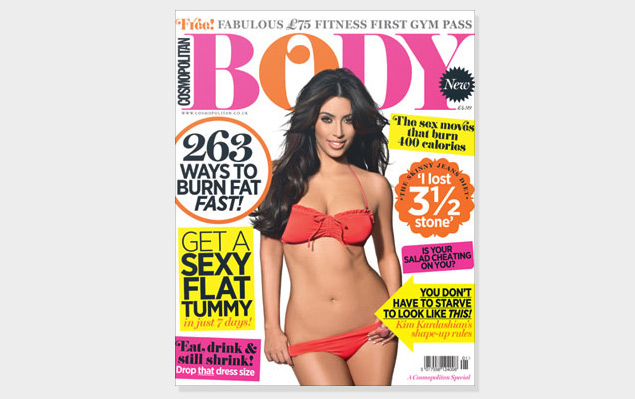
This is even true with the “strong is the new skinny” trend. Muscle, health and strength are being advertised—which is awesome—however more often than not even strength is marketed at women who want to finish a muscle-building program smaller and lighter than when they started.
So you could say that the new strength trend is for fat loss (heavy weightlifting and protein + a calorie deficit) instead of weight loss (cardio and veggies + a calorie deficit). The goal is to come out leaner instead of just littler.
This still doesn’t help us.
That’s because our problem isn’t just a pop culture disconnect, it’s that we actually are naturally skinny. So why are we skinny people seemingly so different from everyone else?
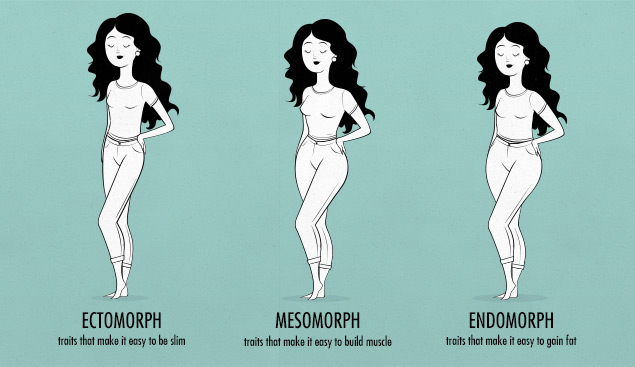
There are a number of factors that result in a large variety of body types. Our body type is called the “ectomorph” body type. The ectomorph, is shaped by a number of traits that result in a naturally slender physique: a narrow bone structure, a fast and adaptive metabolism, a modest appetite, higher insulin sensitivity, smaller stomach size, and skinny-gal hormones. Combine enough of these traits together and it can become incredibly difficult to gain weight.
We’ll discuss these ectomorph traits over the course of the article.
To start, let’s talk about bone structure.
First. Bone Structure & Fat Storage Patterns.
According to Columbia University, before puberty, both men and women have more or less the same body shape—that of a string bean. When puberty hits, a couple things usually happen: testosterone causes the growth of broader shoulders and develops more muscle mass; and estrogen causes people to develop broader hips and to store more fat in their breasts, butts, hips and thighs.
This happens to different degrees in different people; however, most men will be shaped far more by testosterone, and most women, far more by estrogen. This causes men and women to look very different from one another. Both may develop the desirable v-shaped upper body, but it’s predominantly women who have bigger hips, thighs, butts and breasts from the estrogen.
At this point you might be thinking, “But I went through puberty and I’m still a string bean!”
Everyone has different degrees of the two hormones, creating a wide variety of body shapes. Of these, the narrow “string bean” bone structure is actually the most common. Check it out:

Narrow bone structure (aka banana, rectangle). This is the most common female physique, shaped by average amounts of both estrogen and testosterone. North Carolina State University found that 46% of women had this bone structure. (This doesn’t mean that most women are thin, just that most women have narrower bone structures.)
The pear shape (aka triangle). The pear body type is shaped even more heavily by estrogen. Estrogen causes structurally broader hips. It also causes fat to hang out primarily in the thighs, buns and boobs. It can sometimes be difficult for women with this body type to build muscle in the upper body. This describes about 20% of women.
Athletic physique (aka inverted triangle). This is the body type shaped more heavily by testosterone, although testosterone levels are still just a very small fraction of what men typically have. This body type will often have broader shoulders, smaller breasts and an athletic edge over other women when it comes to sports performance and building muscle. Around 14% of women have this body shape.
The hourglass physique. This physique is shaped more heavily by both testosterone and estrogen. It’s a more hormonal physique overall. The testosterone creates structurally broader shoulders, and will also make it relatively easy to build muscle. The higher estrogen levels mean that the hips are naturally wider, and also that fat is stored primarily in the buttocks and boobs. However, while popular in the media, only around 8% of women have this body type.
These are generalizations of course, and most people have a predisposition towards a couple of the body types above. As a thin gal, you’ll probably find that you have a narrow bone structure with hints of the other body types showing through in varying degrees.
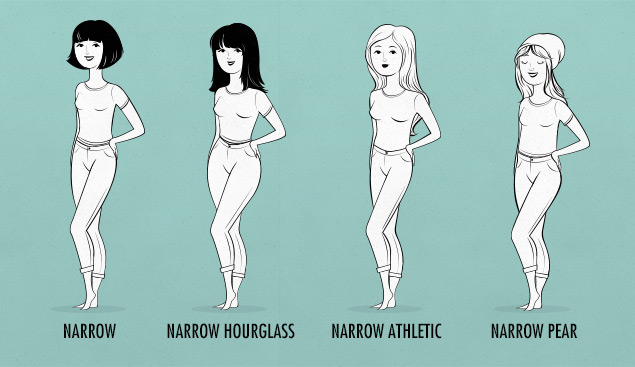
While the amount of fat and muscle on your body is largely within your control, your bone structure and where you tend to store fat is largely due to genetics—more precisely, to due with the hormones you were exposed to as your body developed.
Luckily, if you aren’t totally thrilled with your bone structure, you can change your body shape by changing your lifestyle, exercise and nutrition habits.
Fat gain creates a pear shape. The more fat you gain, the wider your thighs, butt and waist will be, giving you more of an endomorphic “pear-shaped” physique.
Fat loss creates narrow shape. The more fat you lose, the smaller your waist, hips and thighs will get, causing you to develop more of a narrow physique.
Muscle-building creates an hourglass shape. The more muscle you build, the bigger your butt, back, shoulders and thighs will get, creating more of an hourglass physique.
Admittedly, we’re generalizing here. Different body types have different fat storage and androgen receptor patterns, and will store fat and build muscle differently. However, having a healthy amount of body fat and strong musculature will usually result in an aesthetically pleasing and healthy physique (article).
If you’re naturally skinny though, developing strong musculature is much easier said than done. There’s a lot more than just our bone structures making us skinny!
Second. Metabolism and NEAT.
Many naturally skinny women feel like caloric bottomless pits. They feel as if no matter how much food they shovel into their mouths, their weight still refuses to budge on the scale.
That being said, many experts argue that most women burn more or less the same amount of calories each day—that naturally skinny women just underestimate how much they eat (study, study, study). So why does it often seem like you’ve got this furnace-like string bean metabolism making it impossible to gain weight?
Well, that’s because those experts are wrong.
You do burn about the same amount of calories as everyone else does while you sleep (BMR), while you’re roaming around and being active (TEA), while you exercise (EPOC), and while you digest food (TEF).
… But you’ve also got your skinny-gal metabolism kicking things into overdrive in a far more elusive way.
Where your metabolism may differ from other women is with regards to your non-exercise activity thermogenesis (NEAT). These are the calories burned through unconscious activity—things like heat production, fidgeting, and postural control (study).
Most people’s bodies are fairly frugal with calories, and try to store as many as possible for rainy days. Not us. We’re caloric high rollers, baby, and we’re all about spending calories like there’s no tomorrow!
For example, I don’t get cold. Ever. I live in Canada and don’t even own a winter coat. My friends joke that I’m a human furnace. I also pace when I talk on the phone, tap my feet and bob my head along to music, and just generally find sitting still really damn difficult.
How much of an effect can this have? A pretty huge one, apparently. A study looking into metabolisms found that most people burned 3% more calories sitting in a chair than they did lying motionless on their backs. Add in some fidgeting though, and people burned 54% more calories just by casually relaxing in a chair. The same is true with standing. Casually standing burns just 13% more calories than lying on your back, whereas a skinny-gal may burn 94% more calories while standing (study).
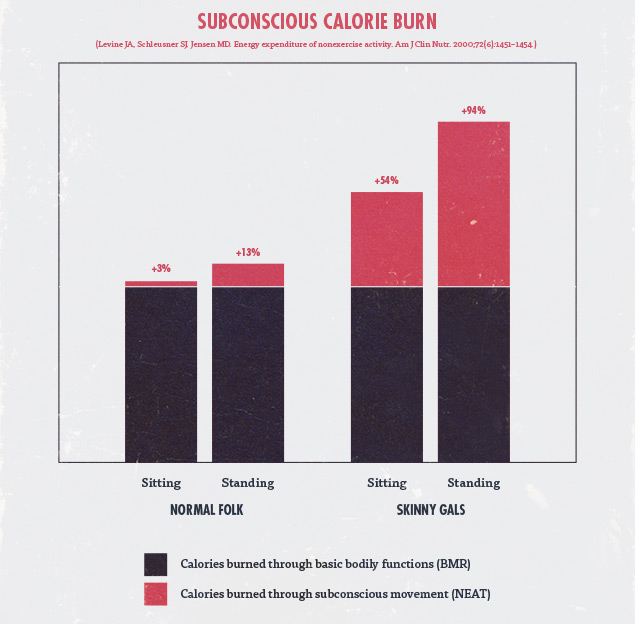
This means that while you may be doing the same things as your friends and colleagues, you may be burning far more calories than them. Over the course of a day, that can mean 475 extra calories burned if you spend most of your time sitting, or 750 extra calories burned if you spend most of your time standing.
Even if you lead a sedentary lifestyle, this more than cancels out the extra calories people have begun consuming since the 70’s. No wonder everyone is inadvertently gaining weight except for us.
Moreover, James Levine, a leading metabolism researcher, recruited ten obese people and ten lean people and measured their postures and movements every half-second for ten days. (He did this by using kinky high-tech undergarments.) The lean people spent two more hours standing than the obese people, burning an estimated 350 more calories each day. This held true even when naturally skinny people gained weight, leading him to believe that this is largely genetically predetermined (study).
And that’s actually only the beginning. Things get really interesting when you start overfeeding us.
A hardgainer’s response to overfeeding
Different people respond very differently to overfeeding. In one study, participants were overfed by 1,000 calories per day for eight straight weeks and instructed not to exercise (study). At the end of the eight week study, some people gained 0.79 pounds of fat and some gained 9.3 pounds of fat. That’s more than a tenfold difference in how much fat was stored.
The group of people who resisted weight gain were called “hardgainers.” That’s us.
This hardgainer phenomenon puzzled researchers for a long time; however, it’s now attributed to unconscious movement.
When overfeeding, almost everyone’s metabolism revs up, but it’s usually not nearly enough to offset the effects of overeating. If your friend eats a 200 calorie cookie she may burn an extra 50 calories and store 150 as fat.
We hardgainers respond to overfeeding by turning up our caloric furnaces far higher than the average person, producing more heat, moving more, and fidgeting more. We might eat that 200 calorie cookie and burn all 200 extra calories.
Other studies have found the same skinny-gal phenomenon (study, study).
This will help keep you lean, but it will also keep you small.
What you can do about it
So that “just eat more” advice is actually quite naive. Our already overactive metabolisms eagerly adapt to any attempt to overfeed. To put this into perspective, most people’s calorie requirements fall within the range of bodyweight X 13-23, with the naturally plump being on the lower end and the naturally skinny being on the higher end. For a 120 pound woman, that’s the difference between burning 1,560 and 2,760 calories each day.
That’s a huge difference.
You might be able to eat the same amount of food as your best friend, add in an entire tub of Ben & Jerry’s, and still not gain weight.
However, we aren’t simply trying to gain weight; we’re trying to gain muscle. Luckily, our bodies adapt to heavy weightlifting stimulus by building up extra muscle before sending the surplus calories off to the furnace. Calories that need to be invested in your buns aren’t extra calories, after all, so they won’t be discarded.
You know how chubbier women often have to do all kinds of cardio in order to stay slim? Well our adaptive metabolisms keep us lean by default.
The tricky part is that we actually need to cue our bodies to build muscle, since we don’t have a lot of it naturally. To do that we really do need to lift some seriously heavy weights. There’s no way around it.
You also need to get into a calorie surplus…
Third. Appetite Hormones and Stomach Capacity.
The fact that we’re awesome at building lean muscle while we’re in a hearty caloric surplus is all well and good, but the problem remains: eating a huge caloric surplus is really damn hard. To make matters even more frustrating, nobody else seems to understand this.
Here’s why:
Skinny-gal appetite hormones.
Maybe you’ve read about the “Paleo” approach to dieting—about how avoiding grains, beans, peanuts, potatoes, dairy, and junk food can help you become lean and muscular. This restrictive approach to nutrition works by cutting high calorie foods that people often overeat.
However, overeating probably isn’t a concern of yours.
You may have wondered why some women hangrily wrestle to control their appetites. One reason is the interplay between leptin, insulin and your appetite (study). For simplicity’s sake, we’ll use just insulin as an example here.
When we eat, our insulin levels go up. As our insulin levels go up, our appetites go down. This leaves a nice pleasant feeling of fullness (meta-analysis). This is how our body tells us that we can put down the fork. Insulin also allows our bodies to store fat and build muscle (study), making it extremely important when trying to change your physique.
Naturally, thin women tend to be rather sensitive to insulin (study). This means two things: 1) that your insulin rises eagerly in response to food—i.e. in goes food, up goes insulin; and 2) it means that your body is hyper-sensitive to insulin—i.e., up goes insulin, down goes appetite. This is good as far as health and appetite regulation goes… but awful if you’re trying to eat more.
Most people nowadays are much less sensitive to insulin, especially chubbier people (study). Since their insulin response is blunted, their process looks more like this: in goes food, in goes a little more food, up goes insulin, up goes a little more insulin, and finally down goes appetite. By the time their insulin gets high enough to trigger a feeling off fullness, they’ve often already eaten three more burritos than they should have.
…And this is why they often need to avoid things like burritos. Protein is highly insulinogenic (study), meaning it will do a great job of filling you up. Fibre will help keep you full for longer. The high protein and high fibrous veggie approach that Paleo takes can be pretty effective at managing appetite. This is probably why it’s caught on like wildfire. (However grains, beans, carbs, and all the other things that the diet demonizes aren’t actually unhealthy. As a result I’m guessing that this diet, like the low fat diets of the 80’s, will just be a fad.)
You don’t need to baby your insulin though, because your insulin sensitivity is already babying you.
Although this might seem like a pain in your too-small ass, being insulin sensitive is actually pretty sweet. Having more insulin sensitivity in our muscle cells and less in our fat cells helps to direct more nutrients toward muscle and less toward fat, making it easier to build muscle leanly. We skinny folk hit the genetic jackpot with this one, and we want to hold onto it at all costs.
Luckily, as long as we approach building muscle cleverly, we can not only hold onto our rad insulin sensitivity, we can also improve upon it. Being lean increases insulin sensitivity (study). Heavy weightlifting increases insulin sensitivity (study). So does building up more muscle mass (study). If you take a skinny girl who already has a genetic advantage, and put her on a hearty muscle-building program, she’ll be an insulin sensitivity powerhouse. This is excellent news as far as your body composition goes.
But while having heightened insulin sensitivity is a tremendous muscle-building and fat prevention asset, it certainly doesn’t help us overcome our appetites. For that we’ve got to do the opposite of what most people do, turning to higher calorie foods that are easier on our appetites. Here’s a chart listing some foods and how filling they are per calorie:

This is where things get controversial.
Focusing on high fibre and low calorie vegetables is common among women who want to be healthy or lose weight. If you’re trying to build muscle though, this can be a mistake.
When it comes to healthful weight gain and building muscle, following mainstream health advice can backfire. For the general population, filling + low-calorie = magic health combination. Popular diet foods tend to be things like: celery, broccoli, lettuce, carrots, beets, spinach, chicken, cucumbers, peaches, etc. These can be our worst enemies.
These mainstream “health” foods make it nearly impossible to consume enough calories overall (study). Foods like broccoli, which are essentially just fibre and water, would fill you up miserably without contributing much to your daily calorie consumption. While broccoli is technically a healthy food, this makes it a very poor staple food choice if you struggle to eat enough.
If we try to follow a diet constructed around low calories foods we run the risk of consuming so few calories that we run into malnutrition issues. As an already skinny guy, whenever I’d go on my “health food” kicks I’d inadvertently become anorexic. I’d be doing everything I could to improve my health and build muscle, however my friends and family would grow ever more concerned about my health.
Focusing on micronutrients (vitamins and minerals) at the expense of macronutrients (carbs, fat, protein) is getting your priorities ass-backwards. You’ll survive way longer eating just sugar than you would eating just celery, since the sugar is at least satisfying your body’s most basic energy needs, while the celery is not. Priority number one should be making sure you get the energy you need to thrive (short and long term health) and priority number two should be getting the micronutrients you need to thrive (long term health).
If you’re trying to consume 2,500 calories per day, 2,200 calories from whole foods and 300 calories of dessert is way better than 2,200 calories from whole foods, skipping dessert, and missing your target by 300 calories. Both have the same amount of micronutrients, however the “clean” diet fails in an even more important way—it doesn’t meet your basic energy requirements.
We don’t need to be using reduced fat coconut milk, drinking light beers or making cauliflower mashed “potatoes”. We’re better off eating foods that are still minimally processed, still rich in micronutrients, and yet higher in calories. Foods such as sweet potatoes, avocados, bananas, trail mix, muesli, eggs, and dairy… and burritos.
These are nutritious whole foods that are also calorically badass.
Hell, if you need to eat some “dirty” calories to meet your lofty energy requirements, well, it might be time to get a little dirty… at least nutritionally… in moderation.
(I really hope calling foods “clean” and “dirty” is also a fad, as studies show that it’s a great way to develop weird food fetishes.)
Anyway, there are a million other ways to manipulate our appetites, and we wrote a couple chapters on it in the Bony to Bombshell program, but there’s one more trick that we can cover here pretty quickly.
Whole foods in liquid form such as smoothies and milk are also high in calories and easy on your appetite (study). Adding a protein/fruit smoothie into your day is a pretty easy way to add more calories, micronutrients, and protein into your diet without maxing out your appetite. With some cleverness you can make them taste pretty good, too.
Stomach capacity
Perhaps you’ve read about the “intermittent fasting” approach to dieting, where you strategically reduce the number of meals you eat. Since some people have very large stomachs and enjoy eating very large meals, this is a diet designed around eating fewer meals instead of smaller meals when dieting. This helps people consume fewer calories overall (study).
Unlike the Paleo diet, I think intermittent fasting will stick around. When it comes to building muscle, it’s less effective than a traditional meal pattern, since eating fewer meals means less protein synthesis (study).It works quite well for people with naturally large stomachs/appetites, since it helps manage appetite. Appetite manipulation aside, however, it isn’t any more or less effective than a regular meal schedule when it comes to losing fat (study, study, study).
That being said, these are not the woes of a skinny woman. Again, this is often because of the natural physiology that goes along with your body type. In a 2001 study conducted at Columbia University, researchers discovered that obese people had markedly larger stomachs than people of normal bodyweight, and that binge eaters had larger stomachs still. Stomachs are sort of like balloons, with each balloon coming in a different size and each being able to inflate to different degrees (study).
Are we stuck with our stomach sizes? In another study, scientists recruited a group of obese people and split them into two groups: one group ate what they normally eat, and the other was forced to eat itty bitty meals. Four weeks later, the group that ate in their typical manner, not surprisingly, had the same stomach sizes as they did when they started. The itty bitty meal group, however, had reduced their stomach size by 27 to 36 percent (study).
More relevantly, the researchers in the first study suspect that the binge eating behaviour was the cause of the larger stomach sizes. The binge eaters weren’t born with larger stomachs, but rather adapted to their eating habits by growing larger stomachs over time. This suggests that by gradually eating larger and larger meals, we could gradually increase our stomach sizes. Sort of like how stretching out a balloon makes it easier to inflate it.
With that said, skinny folk don’t need to increase their stomach sizes. Simply eating more meals (study), adding snacks between meals (study), eating more calorie-dense foods (study), or using any number of other appetite manipulation tricks is plenty. Eating larger meals might help, but you don’t want to create unhealthy binge eating habits, pack so much food into your little stomach that you cause acid reflux, or eat so much that you need a nap after every meal.
Just don’t go intentionally trying to skip breakfast. If anything you’ll want to be adding in some meals or snacks, not taking them out.
Heightened dopamine sensitivity
There’s of course another reason why people tend to eat a helluva lot of food that has nothing to do with appetite or stomach capacity. Eating food causes the release of dopamine, and that release of dopamine causes feelings of intense pleasure. In fact, that’s how our bodies let us know that we’re doing something pleasurable in the first place. This helps us shape our behavior around what our bodies feel is important.
Unfortunately, modern junk food, which is high in both sugar and fat, can create an extremely large dopamine response (study). Some people argue that this can create unhealthy “addictive” habits surrounding junk food (study).
When people get bummed about their love lives (or lack thereof), tired after a long day of work, or stressed out by life in general, it’s common to turn instinctively to fatty/sugary food because your body knows it can get a hit of dopamine there. They aren’t eating because of physiological hunger insofar as they don’t need more calories; they’re eating simply for the predictable pleasure response. This is your typical rom-com scenario where the heartbroken gal drowns her sorrows in a tub of ice cream.
When enough dopamine is released, it eventually satisfies that insatiable craving or urge. Some people are more sensitive to it than others, thus some people need to eat a ton of food in order to stimulate a large enough dopamine response to satisfy their cravings. Bony hearts, however, are often amendable with relatively small portions of ice cream.
…But turning to ice cream in tough times isn’t even something that naturally skinny people tend to do in the first place.
Eating for that pleasurable hormonal response is more of a naturally chubby person thing (study, study). As skinny people, our stress response is often far more affected by other factors, factors that turn our appetites off. When we get stressed, bummed, or tired, we often lose our appetites entirely, or entirely forget to eat. In tough times we tend to find ourselves losing weight, not gaining it.
So if you get in a fight with your lover, they might storm off and raid the fridge; meanwhile… you’re busy forgetting to have dinner.
Fourth. Mainstream fitness = weight loss.
Health, fitness and weight loss are often bundled up together, so it can be really hard to figure out how to exercise in order to gain weight.
Jogging, pilates, spin, light weightlifting circuits, yoga, CrossFit, Insanity, bootcamps, and p90x all make it harder to eat enough to even maintain your weight (study, study). This more true for some people than others, however, as naturally skinny people, both low and high intensity aerobic exercise tends to cause us to burn more calories than we consume (study, study). These types of programs also don’t do much to promote muscle growth (study, study, study, study, study). These are great programs for general fitness and losing weight (both muscle and fat)—which is what they’re all designed for—but they’re awful for gaining weight, building muscle, and preserving muscle while losing weight.
Since mainstream exercise promotes weight loss, and since we aren’t trying to lose weight, oftentimes we just skip out on exercise altogether. That’s a problem for several reasons. First, it isn’t healthy for our bodies. Second, it isn’t healthy for our brains. Third, ectomorph or not, a sedentary life will ever so slowly lead to the dreaded “skinny-fat” physique. It might take decades of inactivity to get there, but it’ll usually catch up with us.
That’s where things get really tricky though. We’re stuck between a rock and a hard place. We can do everyday fitness routines, get no visible rewards, and struggle even harder to eat enough to maintain our bodyweight… or we can skip out on exercise and slowly let our health degrade.
And it’s a little stressful too. I mean, if we combine some sort of general fitness program with a “bulking” diet we run the risk of getting fatter. We may be thin, but Hell, at least we’re good at it! The last thing we want to do is lose our natural advantage by becoming chubbier.
Check this out:
Fitness for building muscle. If you’re eating a surplus of calories and gaining weight, you can build muscle at first if and only if your workouts are relatively heavy for you. As a result, in beginners, many different types of exercise can stimulate a little bit of muscle growth at first (study). Beyond that very early stage though, it doesn’t matter how grueling the workouts are, how fearsomely your muscles burn with a hellish fire, or how much you want to pass out on the floor… if the stimulus isn’t heavy enough, it won’t cause adaptations that will make your muscles bigger and stronger (study, study, study, study, study). If you keep eating in a calorie surplus, at a certain point you will begin to gain fat instead of muscle.
The good news is that if you follow a proper weightlifting program, your muscle cells will soak up the extra calories and you’ll be able to build exclusively muscle:

Frankly, even if you’re trying to lose weight, you’ll probably want to go with the “strong is the new sexy” approach to weight loss and do a type of exercise that will help to build and maintain muscle mass so that you’re only losing fat. We skinny people don’t have much muscle to spare!
Fitness for fat loss. A twelve week study looking at body composition while losing weight found that all participants lost 21 pounds on average, regardless of whether they were doing no exercise, light workouts, or heavy workouts. However, the type of exercise participants performed had a huge impact on the type of weight they lost. The ones who weren’t exercising lost an average of 14 pounds of fat and 7 pounds of muscle; the ones who were doing light weightlifting lost an average of 16 pounds of fat and 5 pounds of muscle; and the ones doing heavy weightlifting lost an average of 21 pounds of fat and 0 pounds of muscle (study).
The findings of another study looking into fat loss and exercise are even more extreme. It found that the lighter weightlifting group lost an average of 13 pounds—7 pounds of fat and 6 pounds of muscle. The heavier weightlifting group lost 18 pounds, losing 22 pounds of fat and gaining 4 pounds of muscle (study).
While in a calorie deficit, general fitness exercise makes you smaller, whereas heavy weightlifting will make you leaner (and perhaps ever so slightly more muscular).
Why does this happen? Lighter exercise causes our bodies to make endurance adaptations. We improve blood flow so that we can fuel our muscles for longer periods of time. Conversely, heavy weightlifting stimulates muscle growth by making our muscle cells more sensitive to insulin. Our muscles will hog more of the calories we eat and use them to become bigger and stronger. This is also why when losing weight it’s important to lift, as that’s what preserves muscle mass.
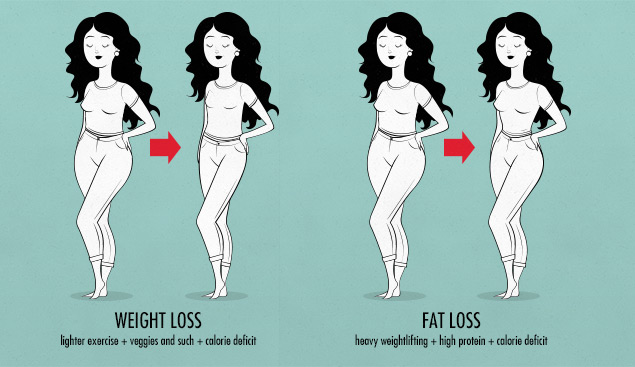
So if you don’t already have extra muscle hangin’ around, you’ll want to start lifting some seriously heavy weights. That isn’t the only option, but it’s the best option. It’s hands down the most effective way to gain weight, build muscle, improve body composition, and become more of a visibly healthy babeshow. Here’s what it looks like in real life:
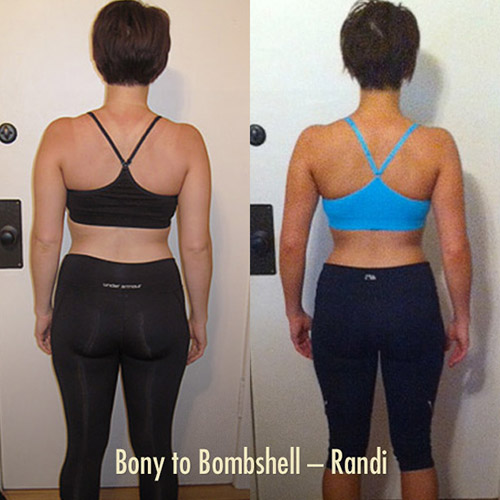
Summary
People come in a variety of different shapes and sizes. Each body type is a little different and often responds best to a slightly different approach; however, in general, being healthy, fit, and strong will result in an aesthetically pleasing physique, regardless of genetics.
That has little to do with why we’re skinny, though. The reason we struggle to gain weight is because we have a number of ectomorphic traits that make it difficult to get into a caloric surplus—such as a raging metabolism, an adaptive “hardgainer” metabolism, a small stomach capacity, amazing insulin sensitivity, and greater dopamine sensitivity.
It’s often frustrating, but these can be great things. We never need to be hungry or hangry, we don’t need to restrict the foods that we love, and, perhaps best of all, we don’t need to deal with the weird negative psychological effects of perpetually trying to become smaller (study).
The problem is that nowadays weight gain is a rare goal, especially in the women’s health and fitness industry.
The skinny-gal approach to nutrition. Since most people eat too much, the emphasis in most diets is on what to remove. There’s also a lot of fear surrounding foods that are higher in calories, like those containing sugar, carbs, gluten, and fat. Since we’re actively trying to eat more, the first thing we should be doing to our diets is cleverly adding things in. We don’t really need to be restricting anything.
So put some milk and sugar in your coffee. Blend up a fruit smoothie to drink alongside it. Ask for an extra egg when you’re out for brunch. Put some olives in your martini. And at dinner, maybe have a fruit salad instead of a salad salad.
The skinny-gal approach to fitness. Similarly, since most fitness advice is about moving more and improving our general fitness, we need to take a bit of a different approach. If your goal is to gain weight, heavy weightlifting is a far better way to get strong and build muscle. Once you become good at it you’ll probably realize that building muscle isn’t as out of reach as you once thought.
Now I’m not saying it’ll be easy. To say that this was a huge challenge for me is an understatement. I tried and failed more times than I can remember before finally wising up and having success. You, too, will need to be clever, and you’ll need to develop good habits. I’m hoping this article helps with that!
The good news is that once you’ve successfully packed on some pounds, maintaining muscle is actually pretty easy. A pound of muscle only burns around 6 calories per day (study, study, study). If you were to gain a whopping twenty pounds of muscle you’d only need to consume an extra 120 calories to maintain it. That’s a small glass of milk.
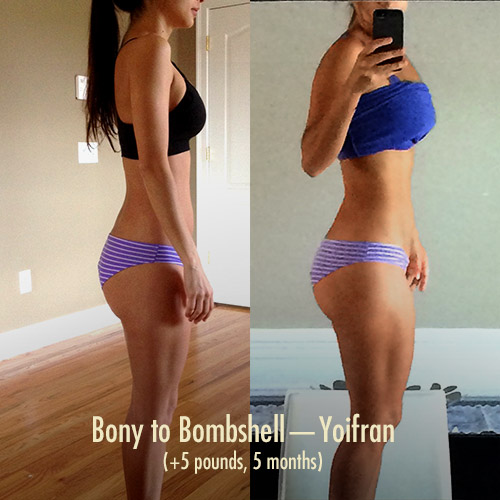
Original article and pictures take http://bonytobombshell.com/the-scientific-reasons-why-some-women-are-naturally-skinny/ site

Комментариев нет:
Отправить комментарий